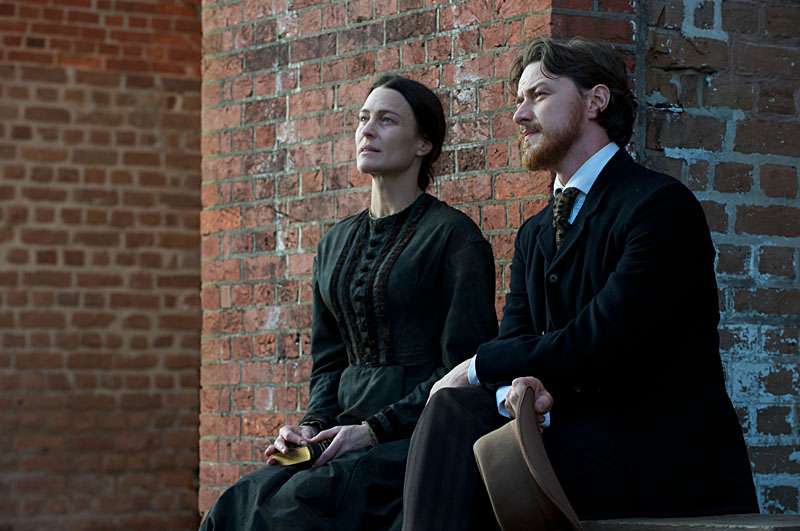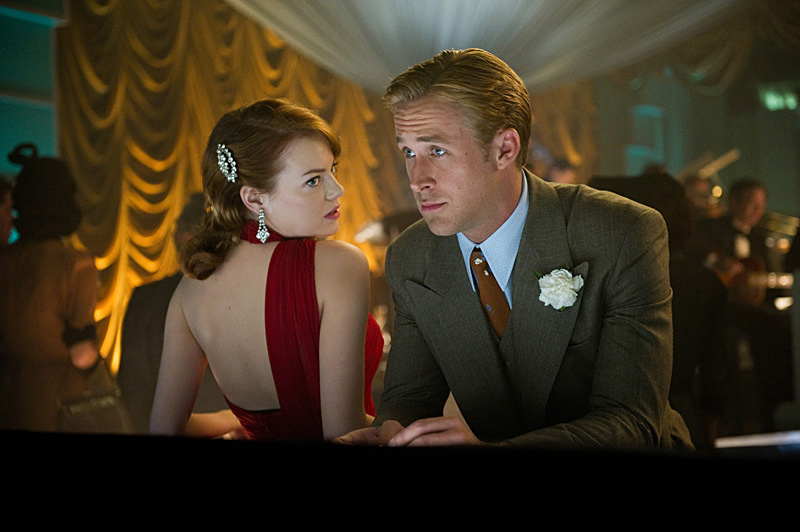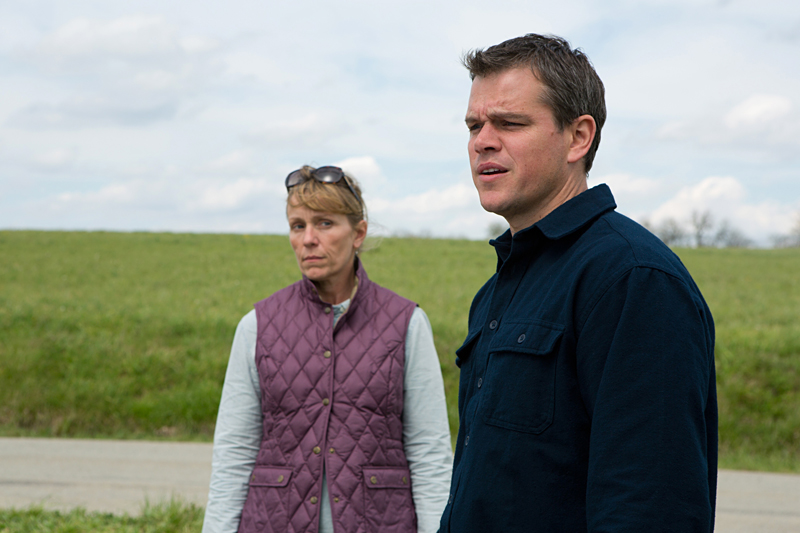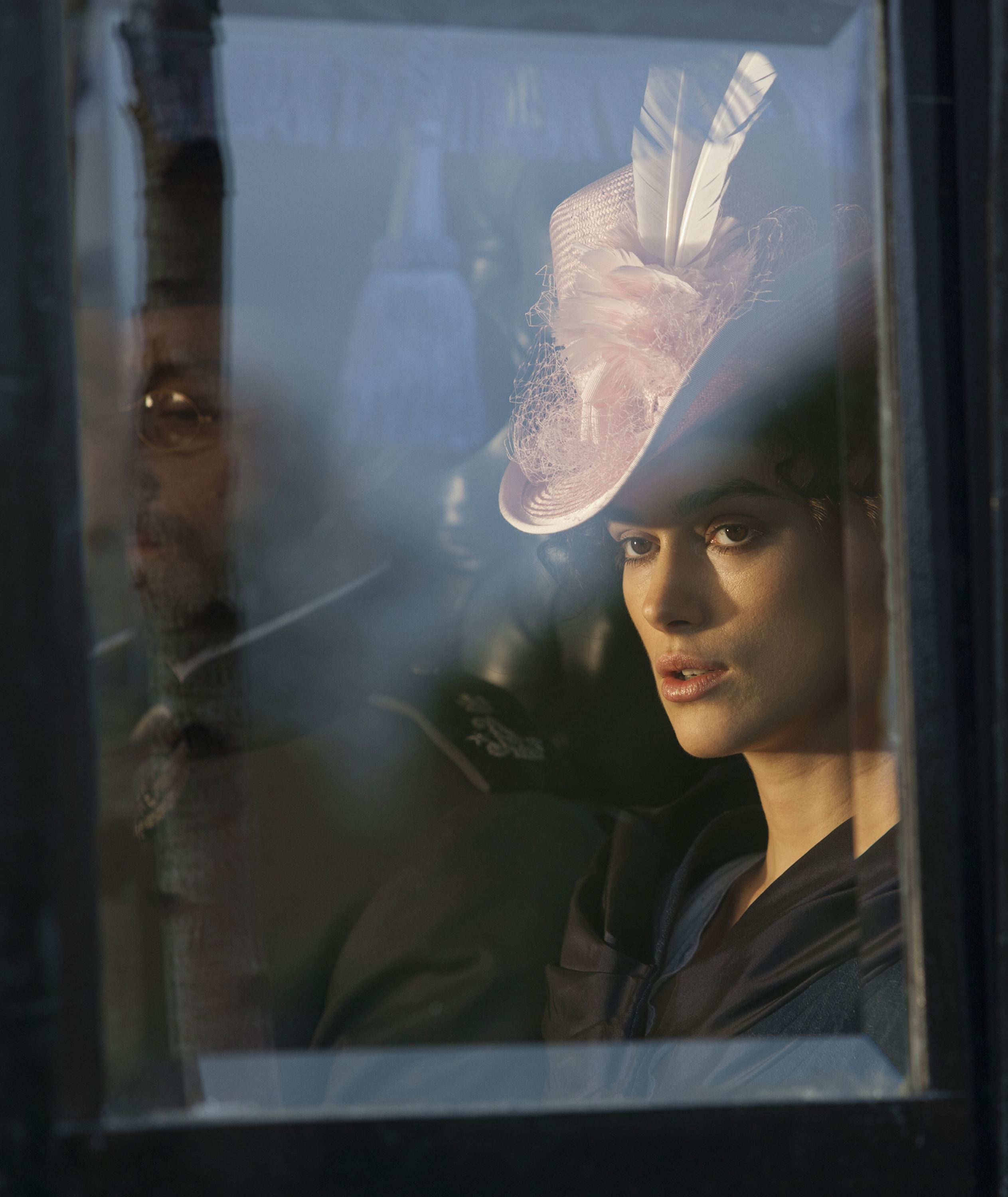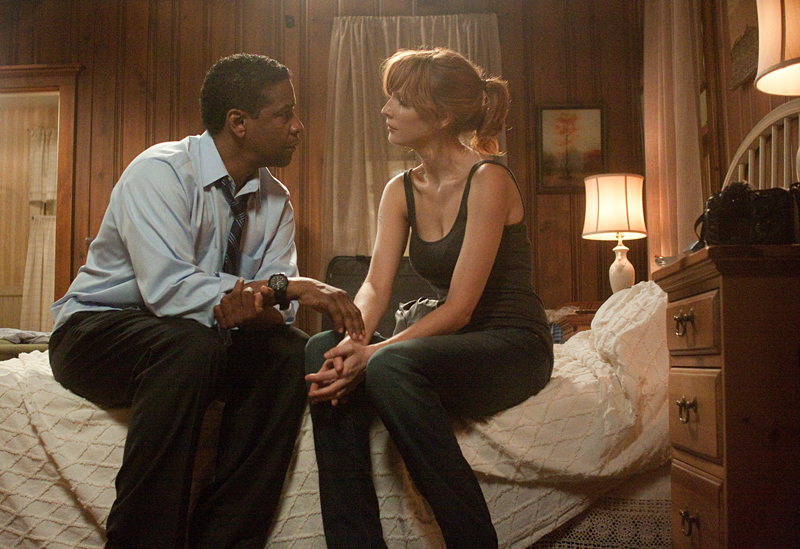Set in the months after Lee’s surrender at Appomattox, Robert Redford’s dull history lesson follows the consequences of the fatal shot at Ford’s Theater—specifically the trial of Mary Surratt, presented before a military tribunal as the den mother of the conspiracy to assassinate President Lincoln. Robin Wright plays Surratt, with James McAvoy as Frederick Aiken, the green defense lawyer who becomes convinced that her trial is nothing but a railroading, headed toward judicial murder on the gallows. Square-jawed and knotty-fingered, with the look of having been dragged around by life, Wright fits her part and period—but McAvoy’s Aiken, a peevish pushover from first to last, is the one who carries—and stumbles with—the film. Redford, never the subtlest of dialectic filmmakers, has now become the browbeating professor he played in Lions for Lambs, dotting rhetorical i’s for the audience in every scene while failing to blow dust off The Conspirator‘s period setting. Courtroom scenes are stagey, with cued-up gasps and canned laughter. After the first reel, there’s rarely any sense of a larger polis outside the museum-room interiors, uniformly lit by cinematographer Newton Thomas Sigel in clear, streaming shafts of perpetual-noon sunlight. Barely worth the extra credit, kids.
The Conspirator: Robert Redford’s History Lesson
